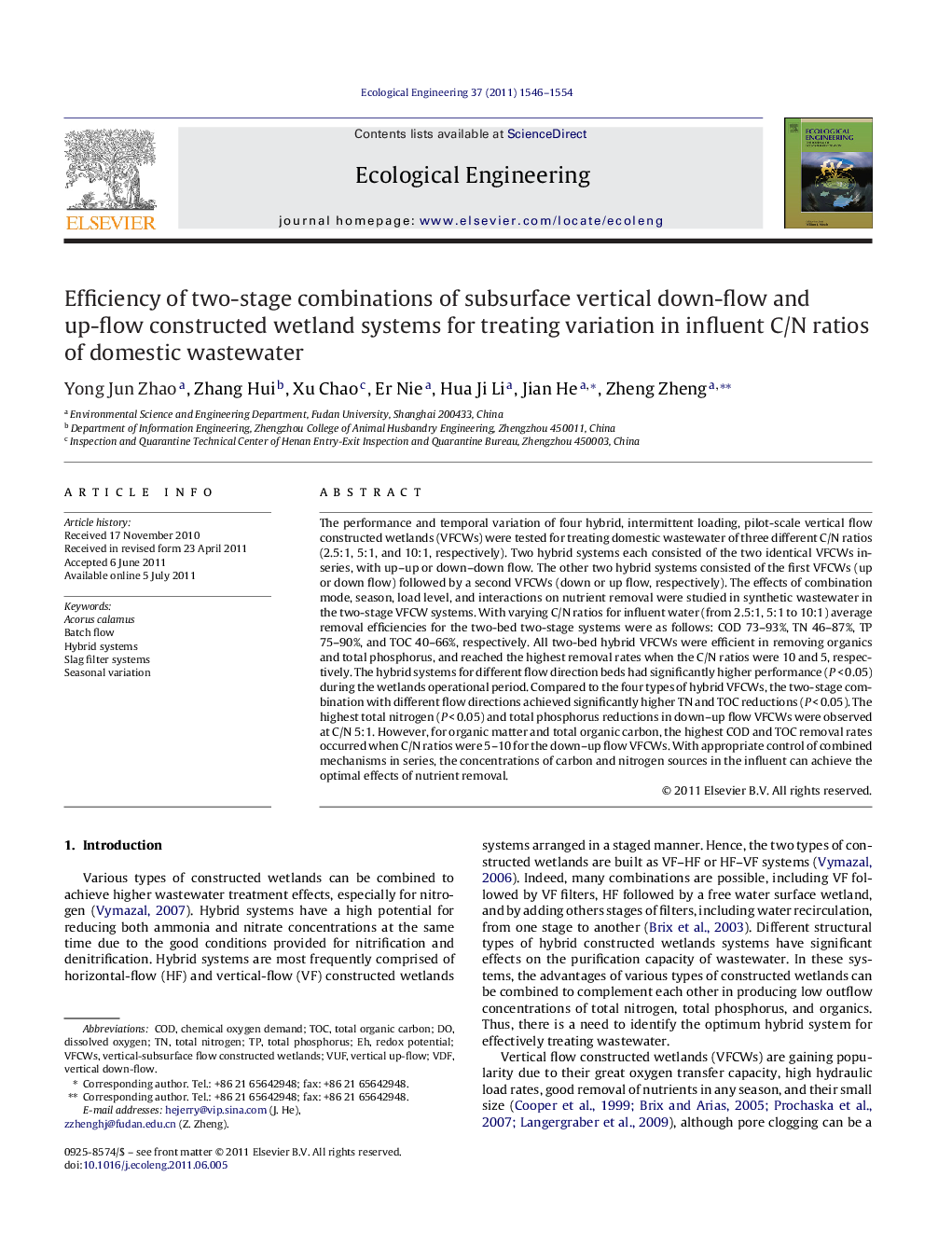| کد مقاله | کد نشریه | سال انتشار | مقاله انگلیسی | نسخه تمام متن |
|---|---|---|---|---|
| 4390276 | 1305164 | 2011 | 9 صفحه PDF | دانلود رایگان |

The performance and temporal variation of four hybrid, intermittent loading, pilot-scale vertical flow constructed wetlands (VFCWs) were tested for treating domestic wastewater of three different C/N ratios (2.5:1, 5:1, and 10:1, respectively). Two hybrid systems each consisted of the two identical VFCWs in-series, with up–up or down–down flow. The other two hybrid systems consisted of the first VFCWs (up or down flow) followed by a second VFCWs (down or up flow, respectively). The effects of combination mode, season, load level, and interactions on nutrient removal were studied in synthetic wastewater in the two-stage VFCW systems. With varying C/N ratios for influent water (from 2.5:1, 5:1 to 10:1) average removal efficiencies for the two-bed two-stage systems were as follows: COD 73–93%, TN 46–87%, TP 75–90%, and TOC 40–66%, respectively. All two-bed hybrid VFCWs were efficient in removing organics and total phosphorus, and reached the highest removal rates when the C/N ratios were 10 and 5, respectively. The hybrid systems for different flow direction beds had significantly higher performance (P < 0.05) during the wetlands operational period. Compared to the four types of hybrid VFCWs, the two-stage combination with different flow directions achieved significantly higher TN and TOC reductions (P < 0.05). The highest total nitrogen (P < 0.05) and total phosphorus reductions in down–up flow VFCWs were observed at C/N 5:1. However, for organic matter and total organic carbon, the highest COD and TOC removal rates occurred when C/N ratios were 5–10 for the down–up flow VFCWs. With appropriate control of combined mechanisms in series, the concentrations of carbon and nitrogen sources in the influent can achieve the optimal effects of nutrient removal.
► We model and compare the efficiencies of four hybrid CWs subjected to the same feed C/N ratios.
► Appropriate control of C/N ratios in hybrid CWs can affect optimal nutrient removal.
► Nutrient removal will be decreased if feed direction is similar in hybrid CWs.
► Nutrient removal will be increased if feed direction is different.
Journal: Ecological Engineering - Volume 37, Issue 10, October 2011, Pages 1546–1554